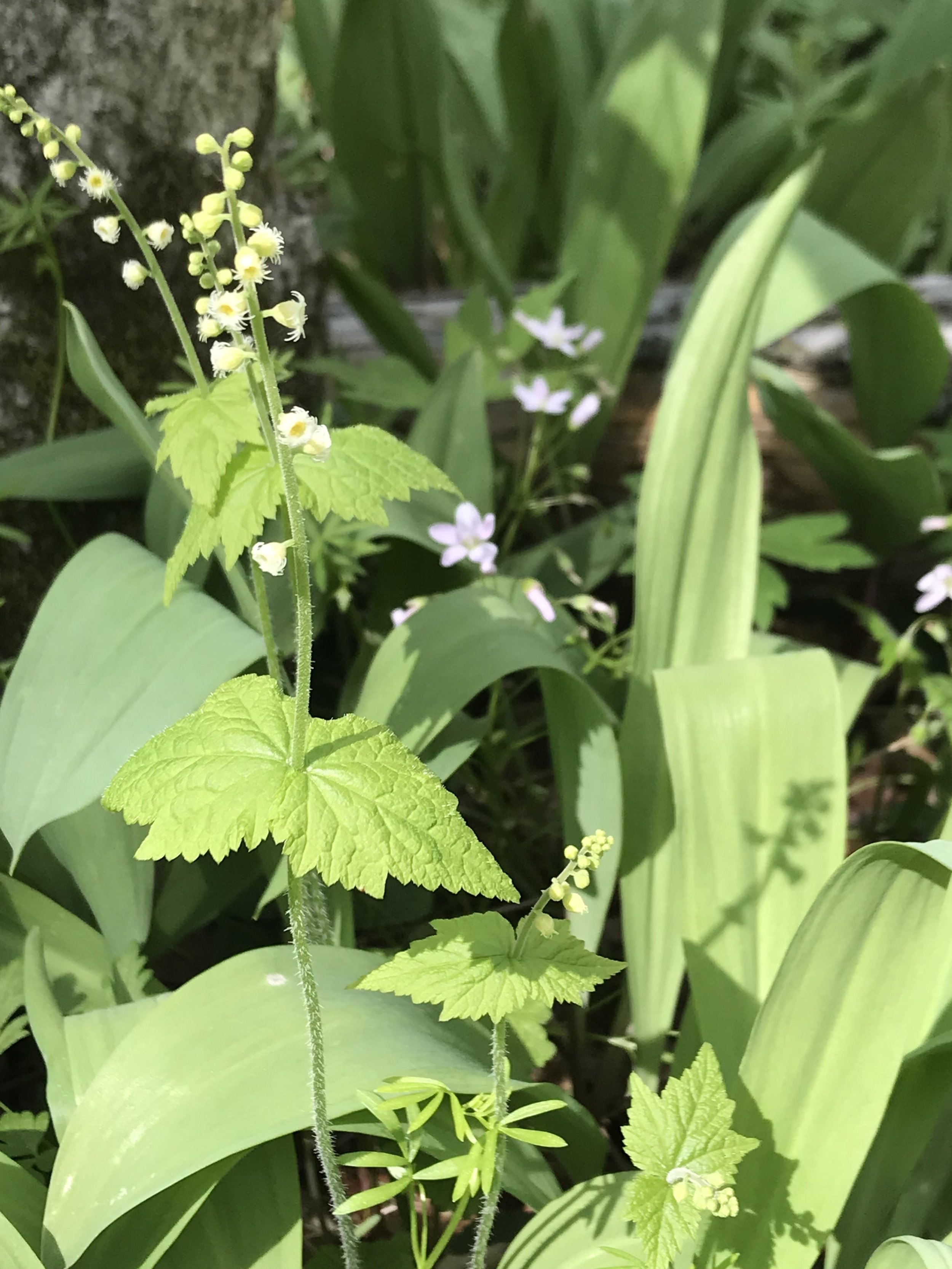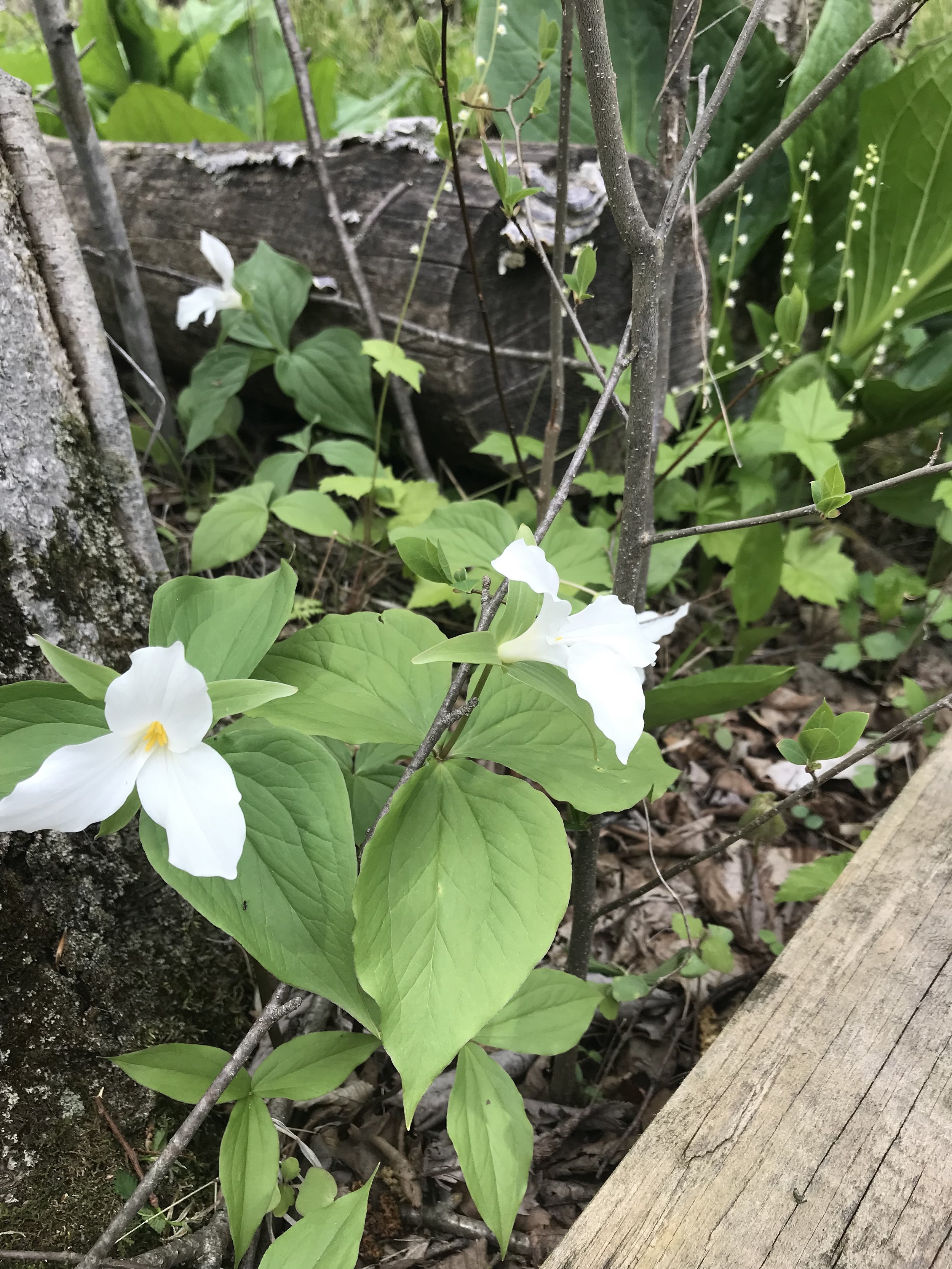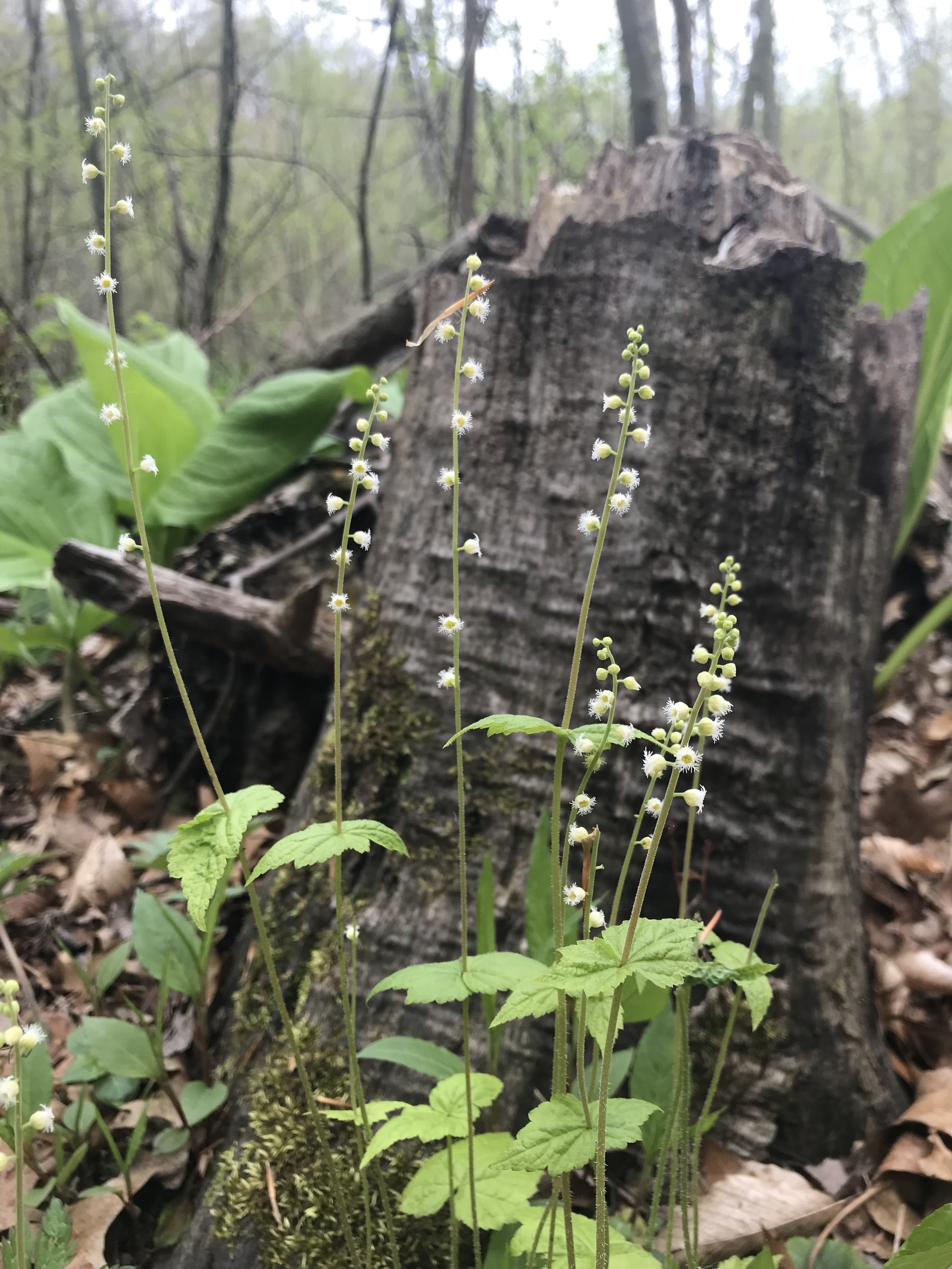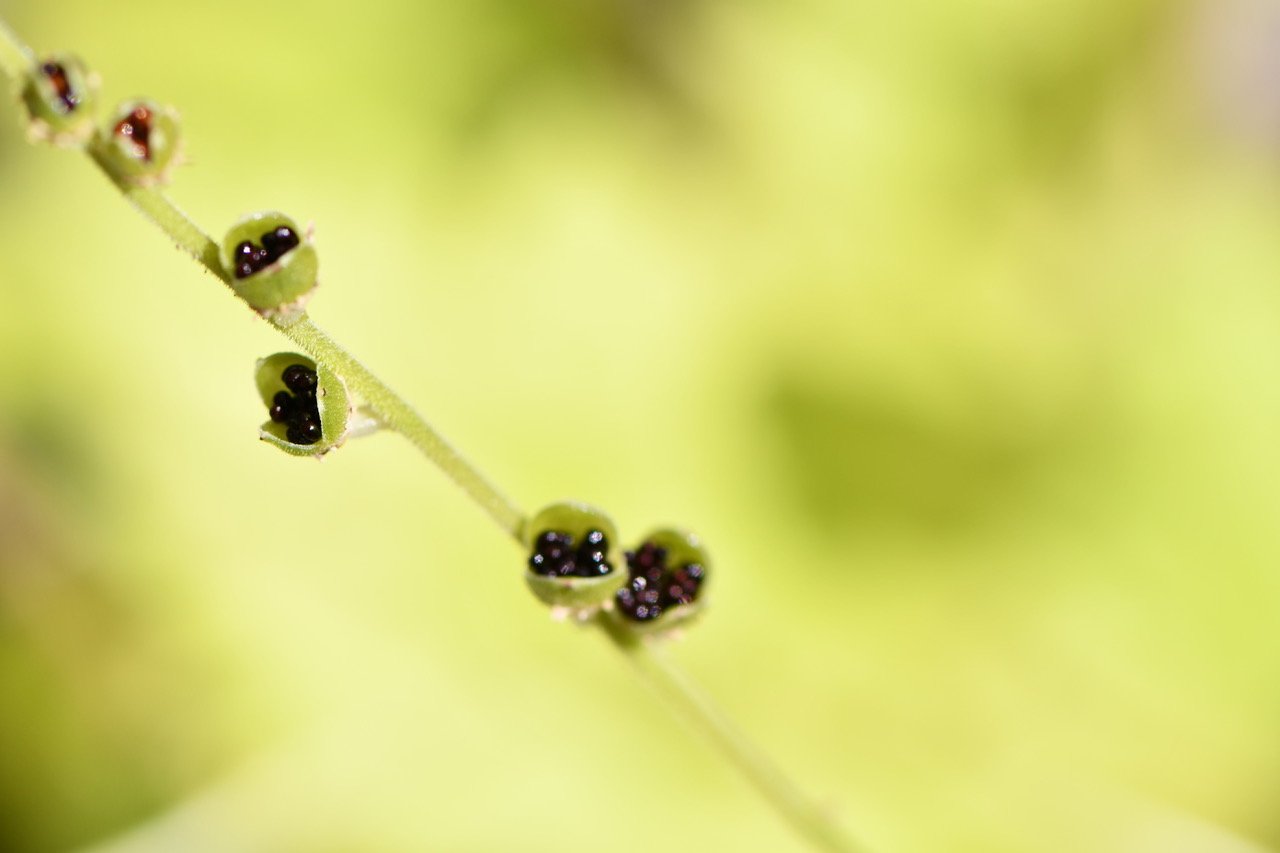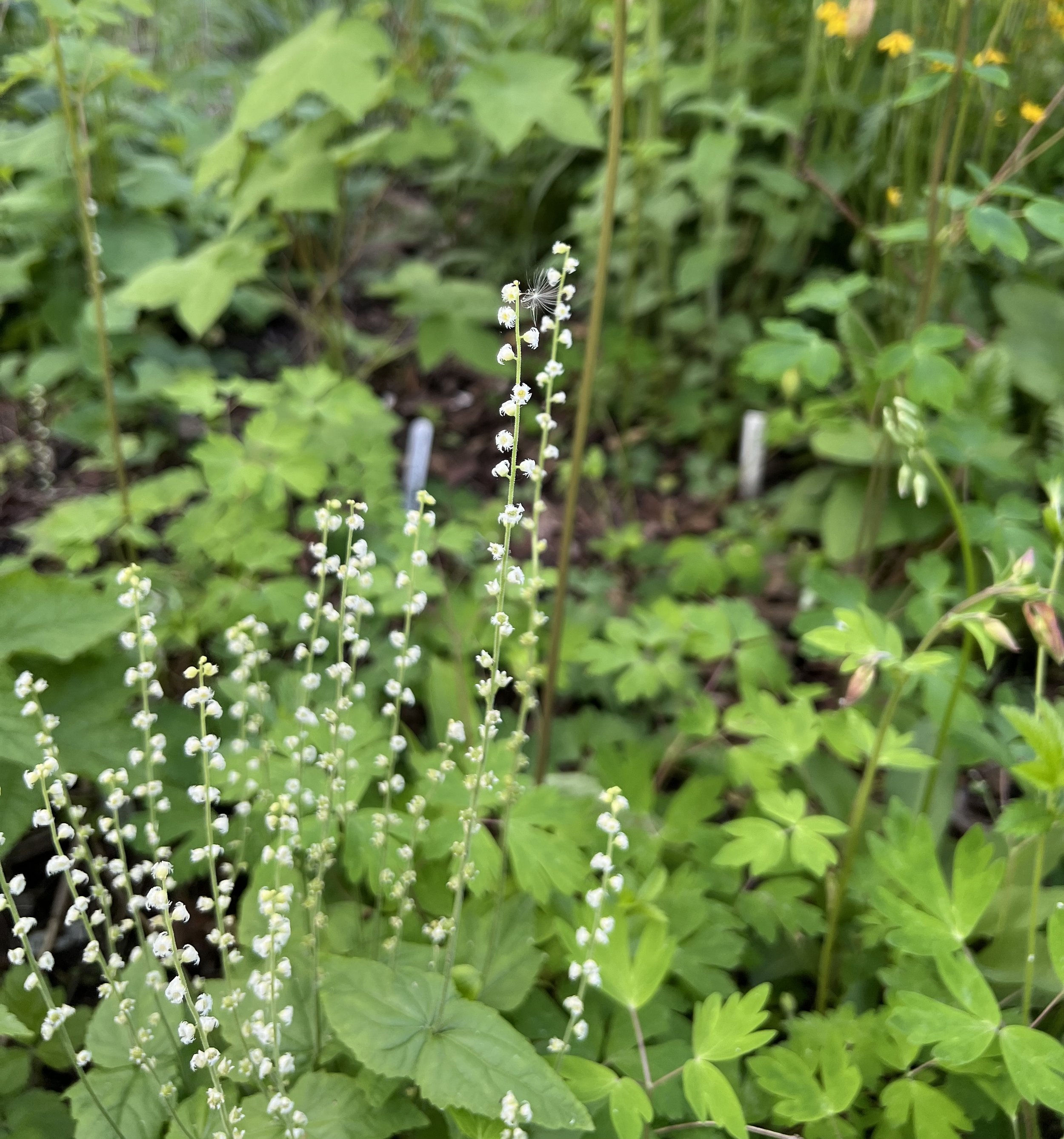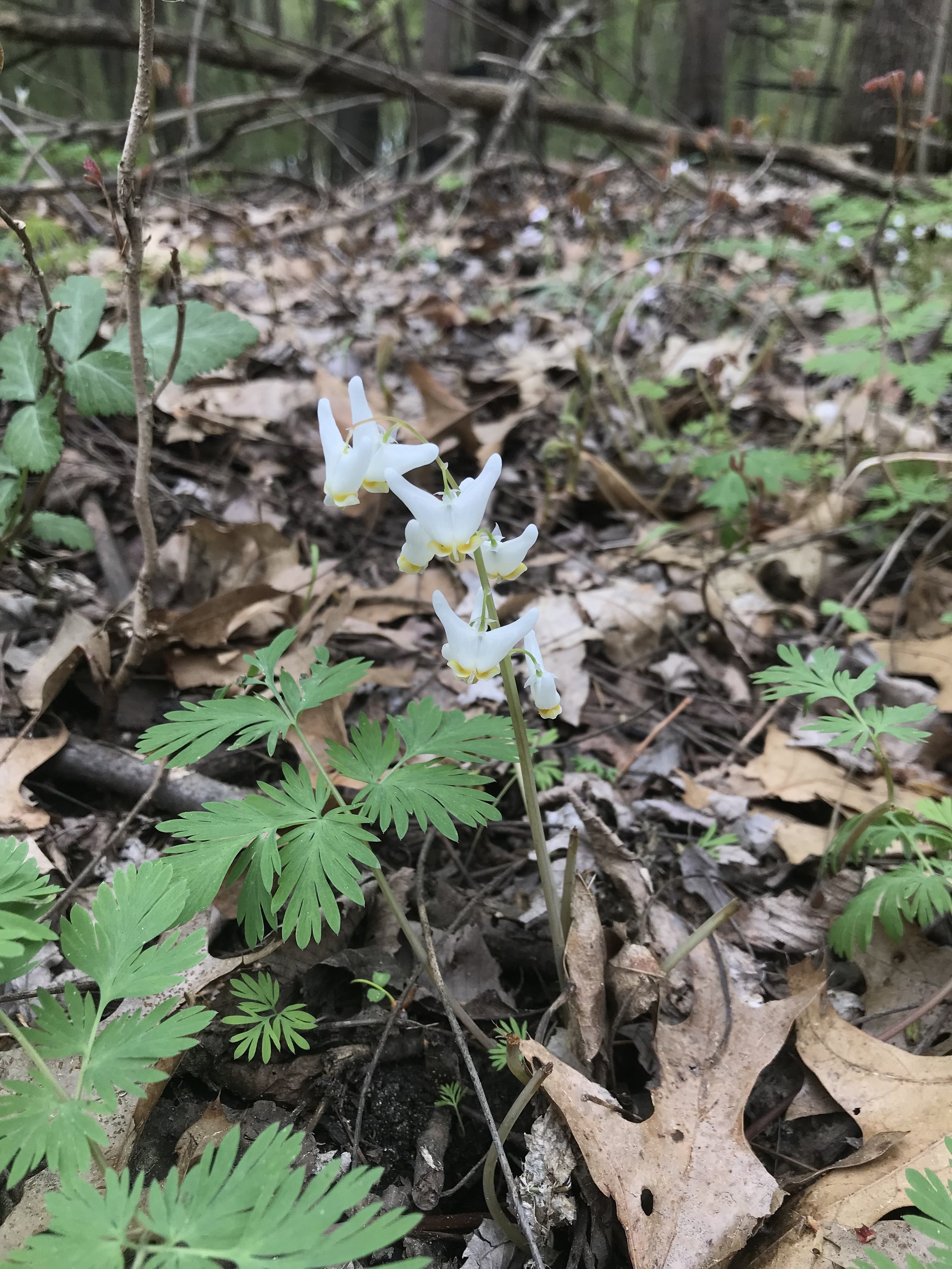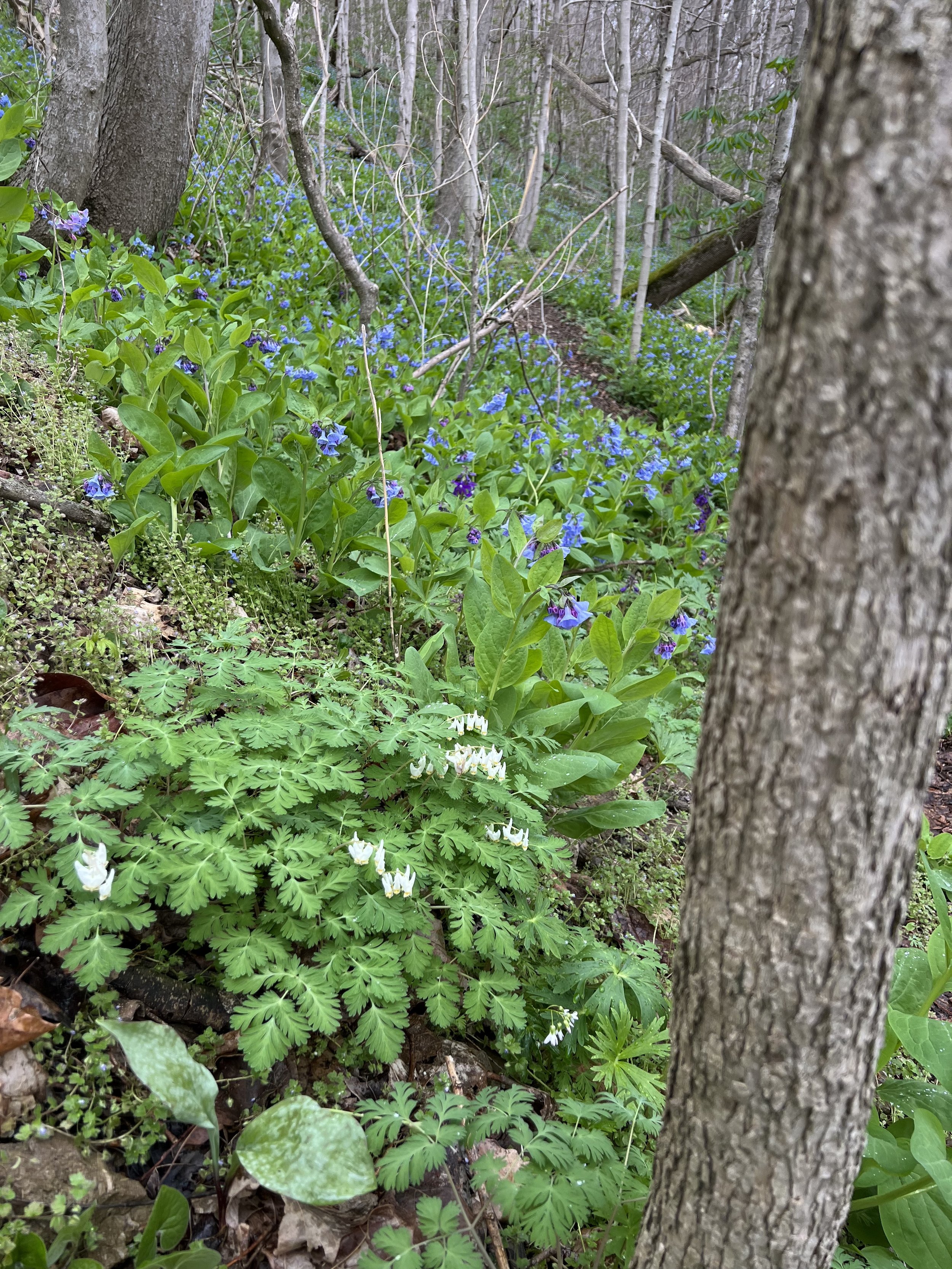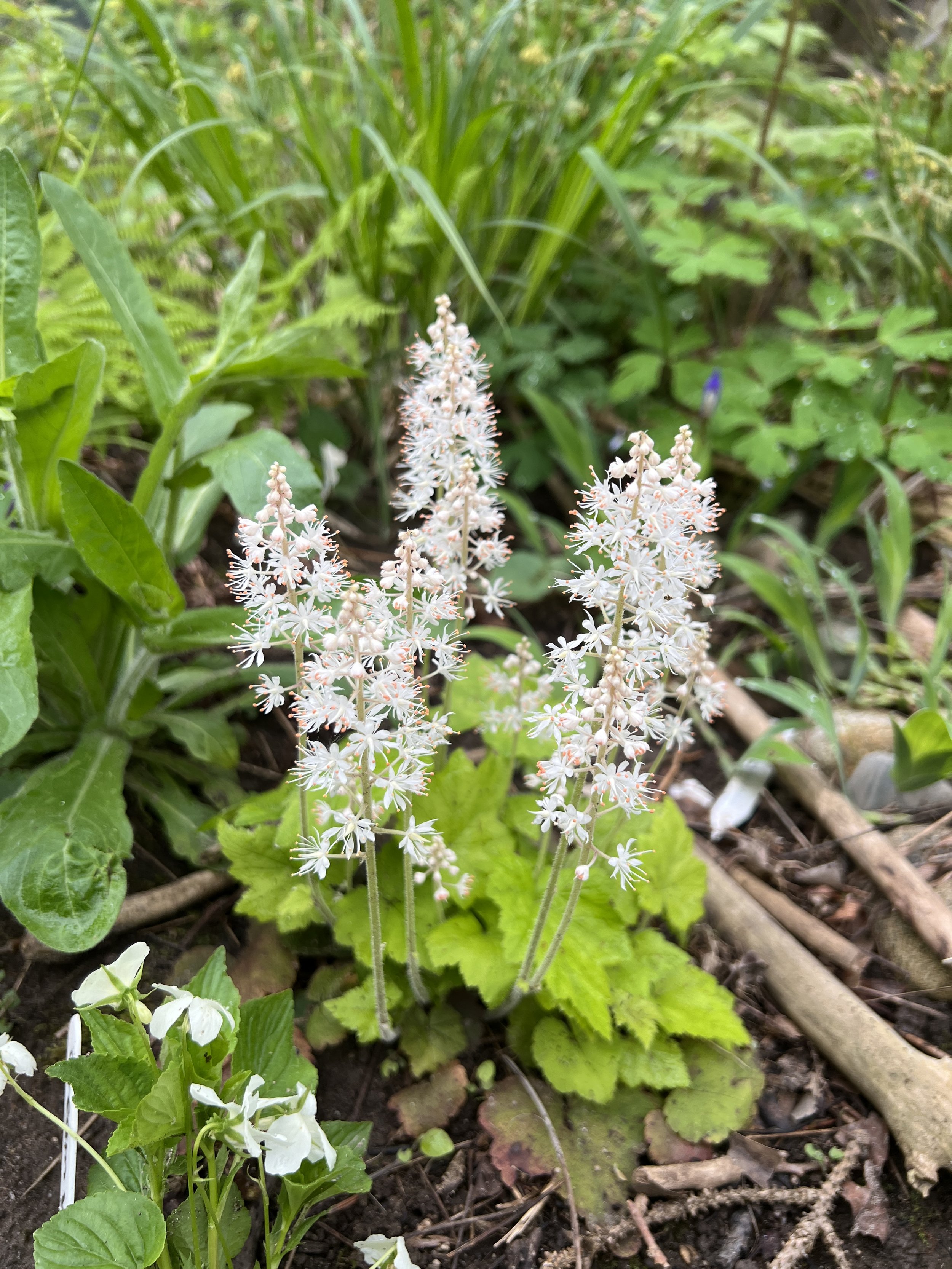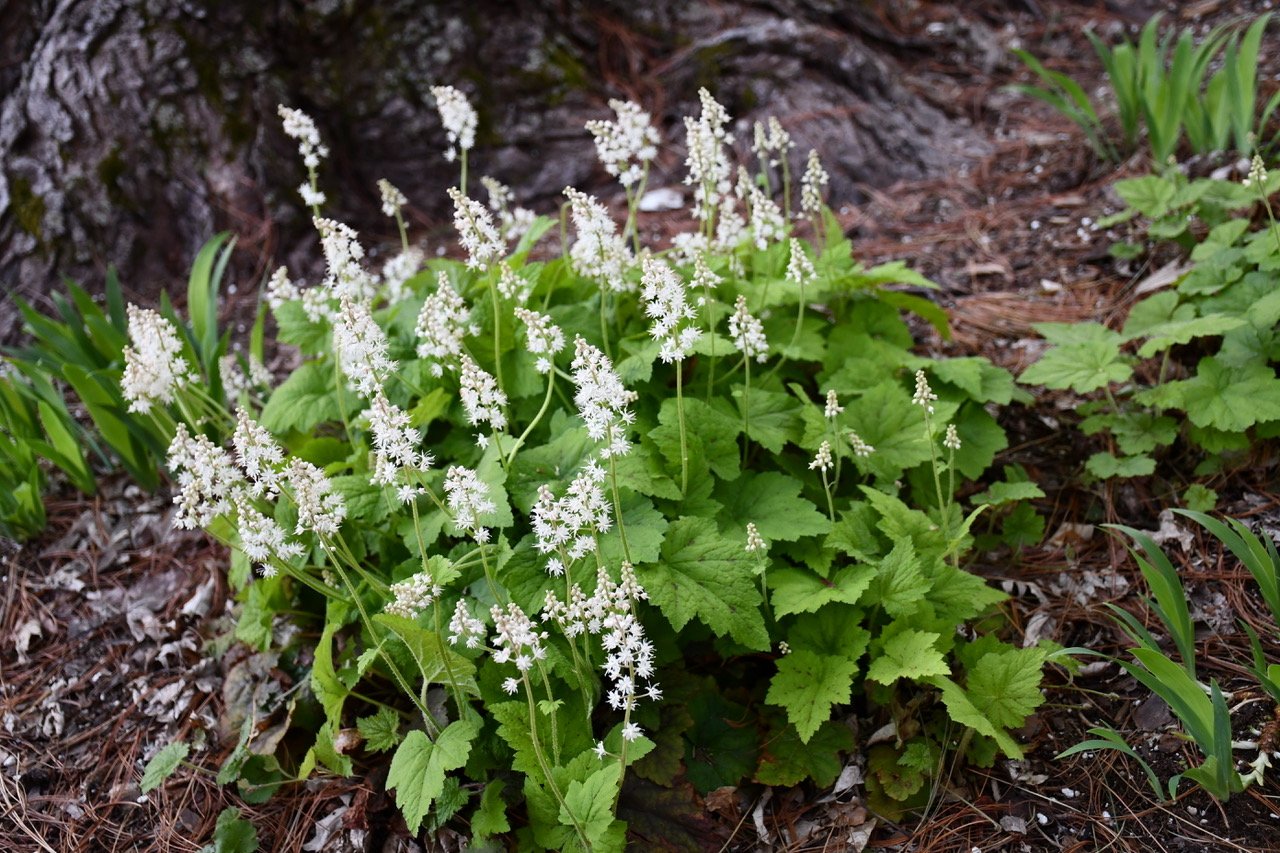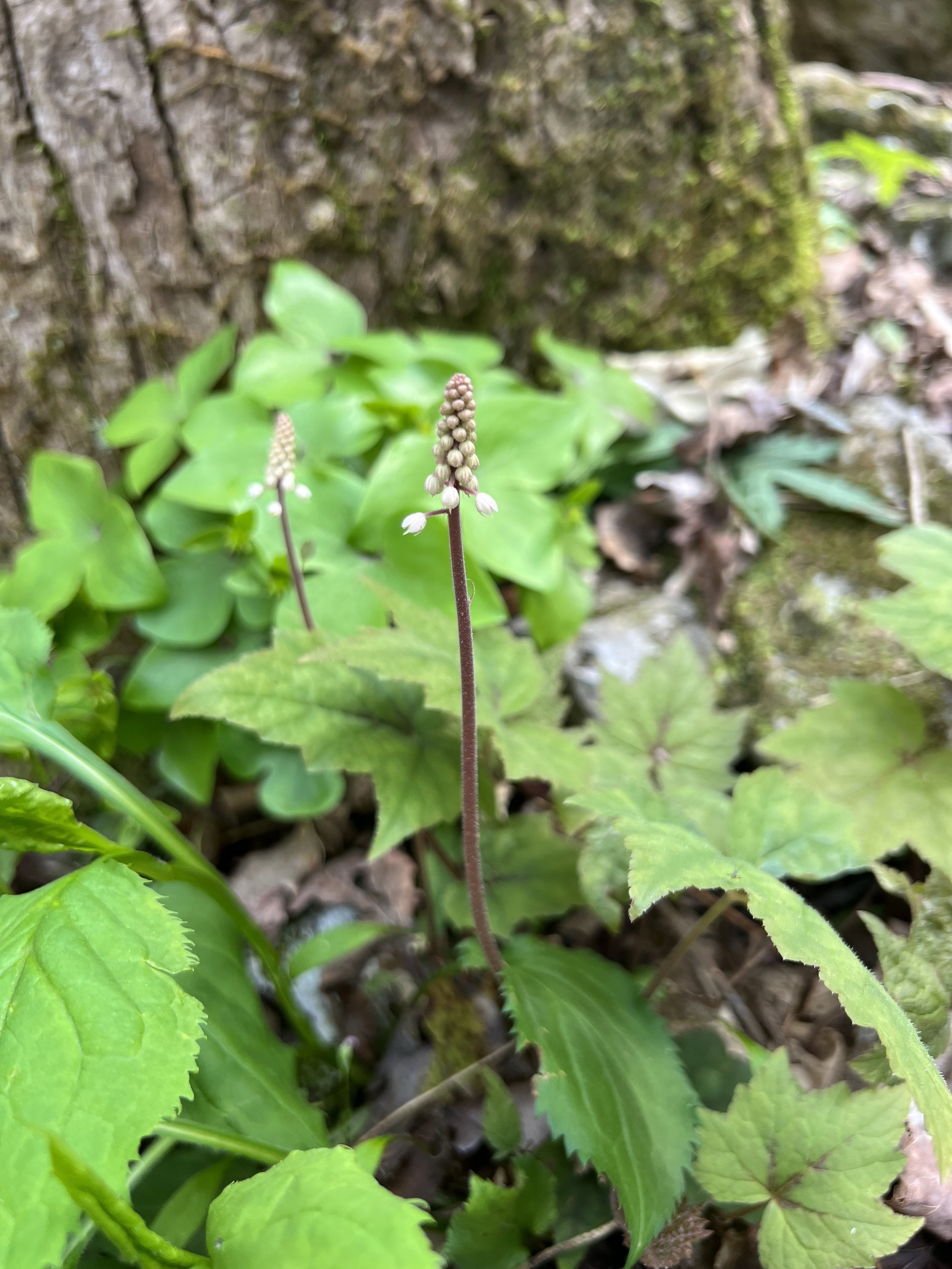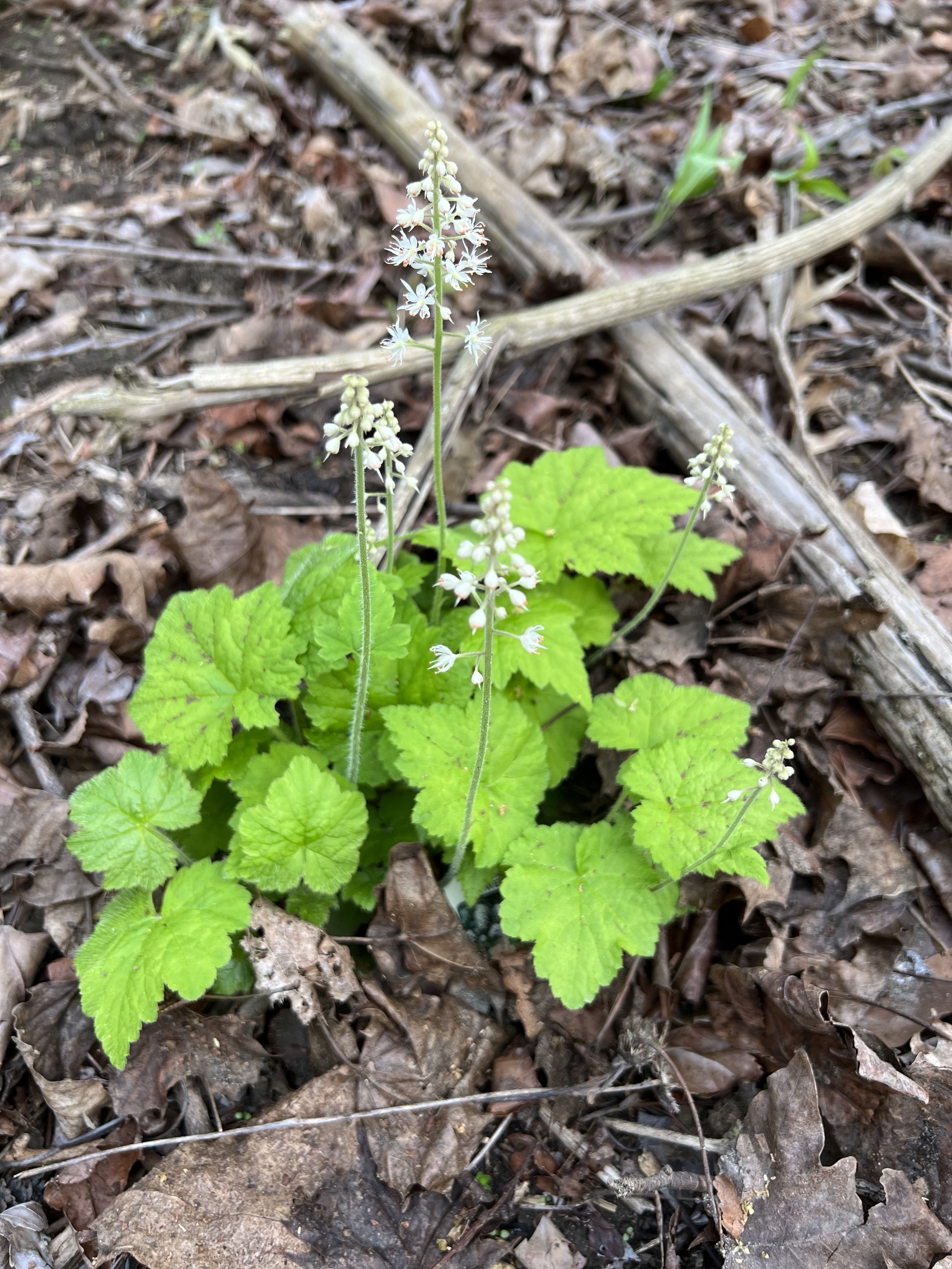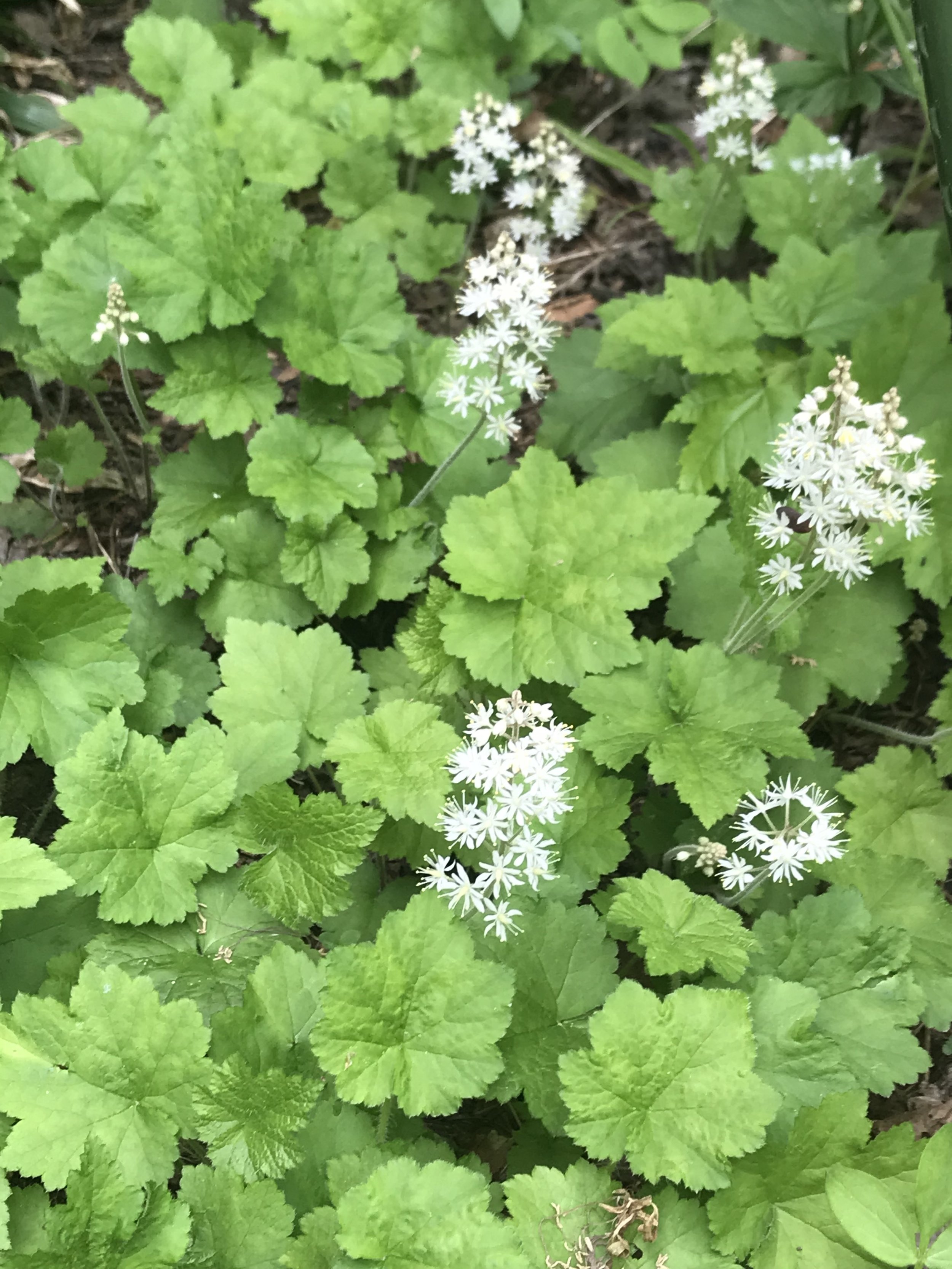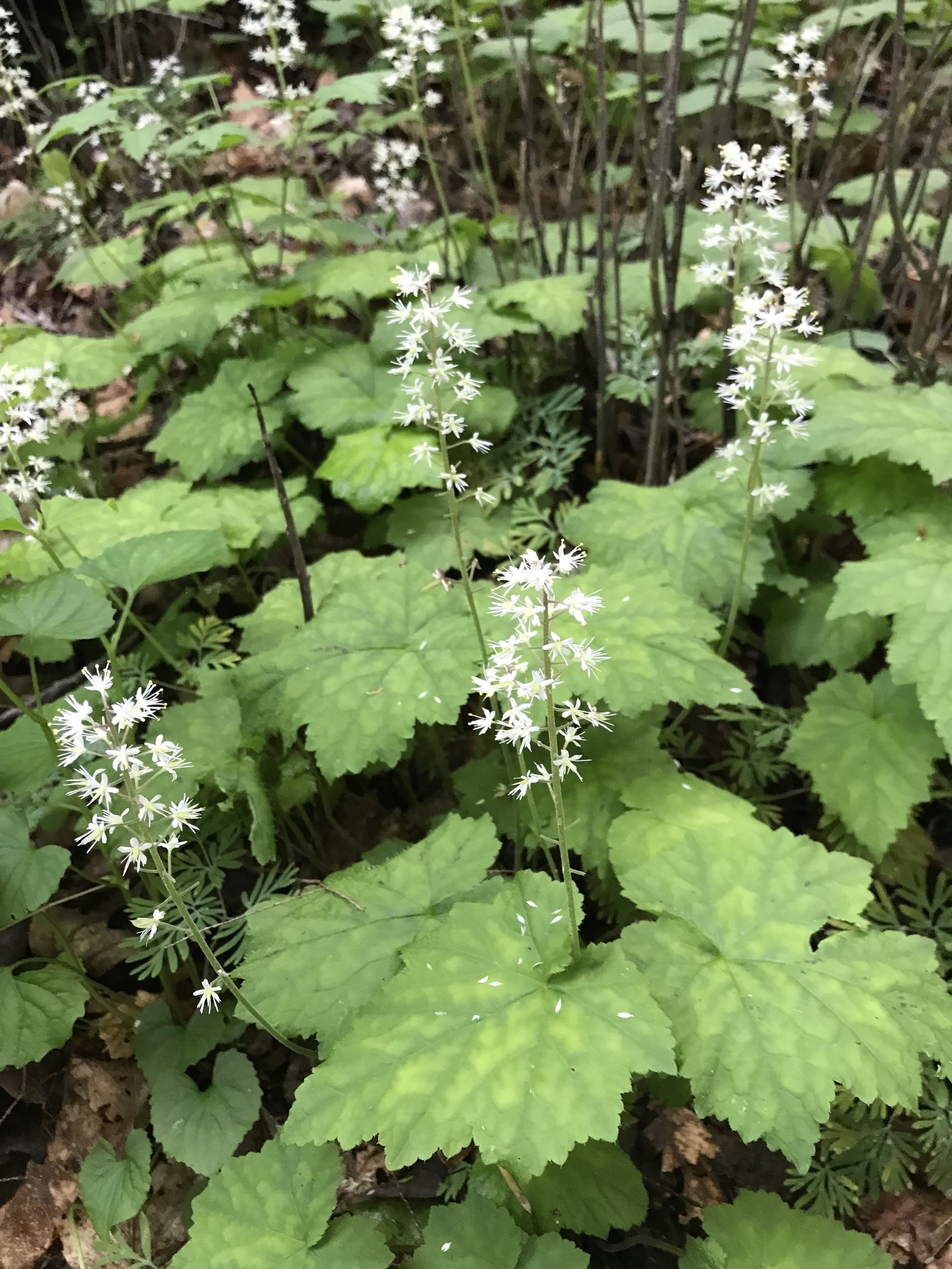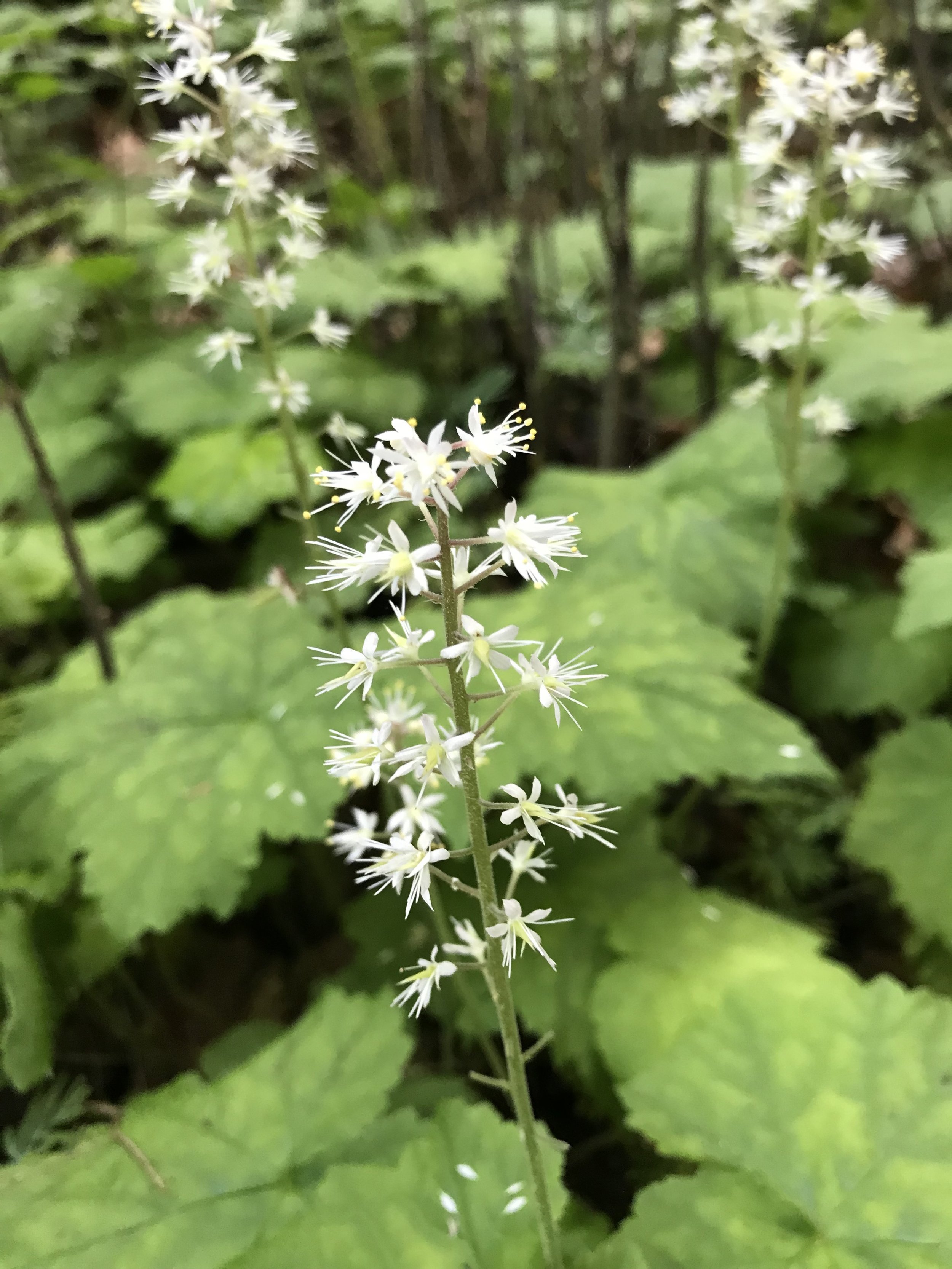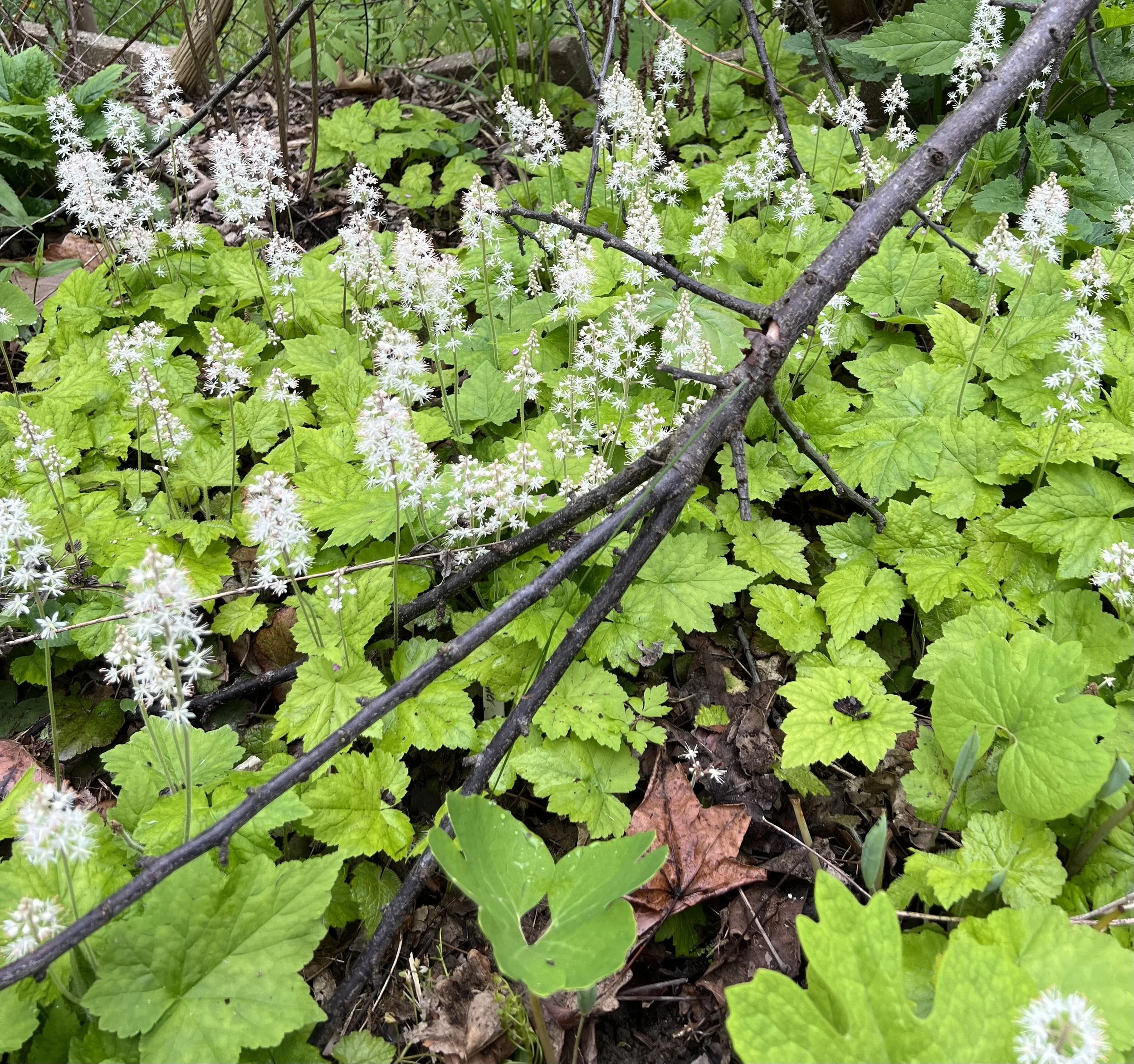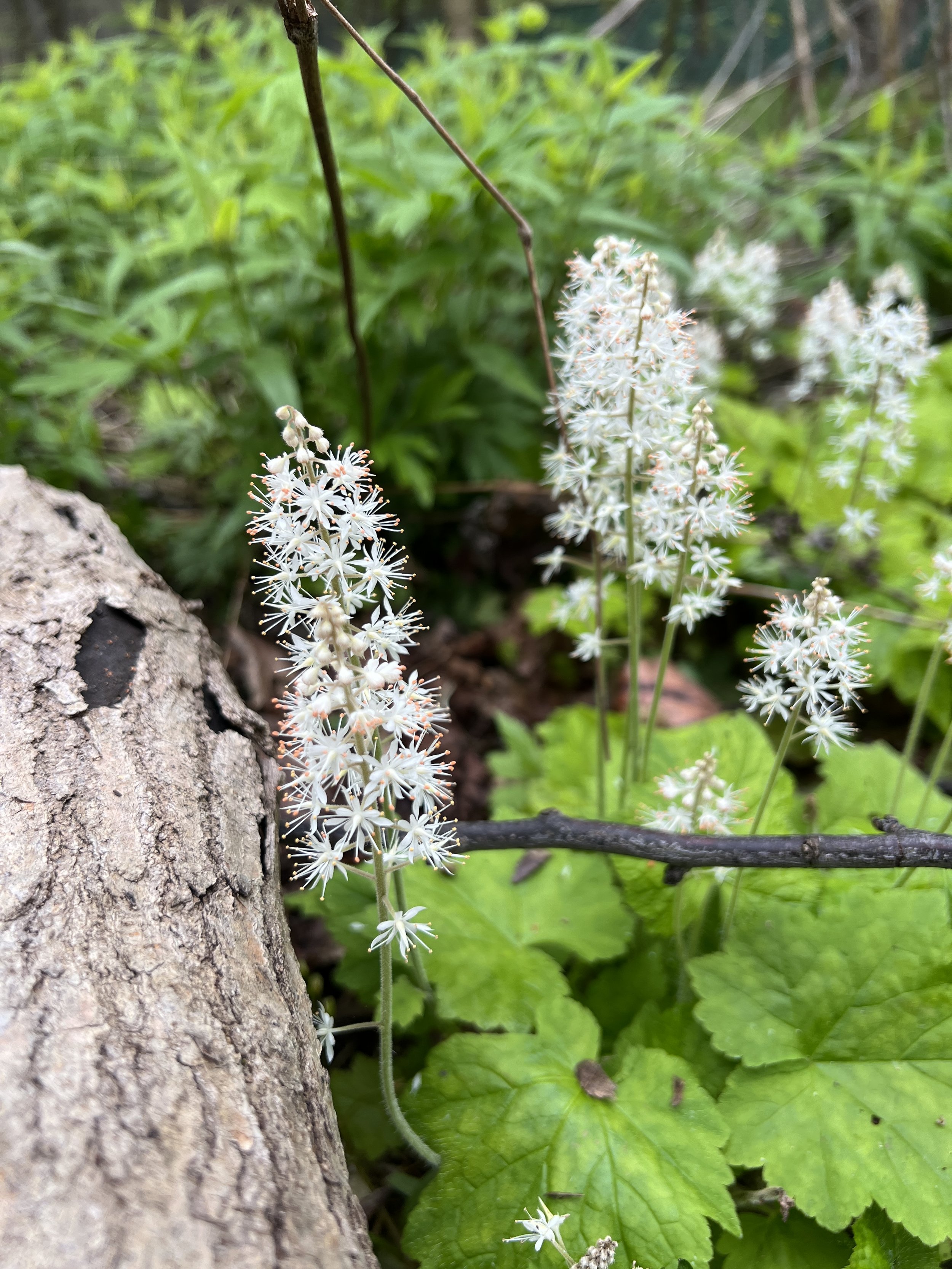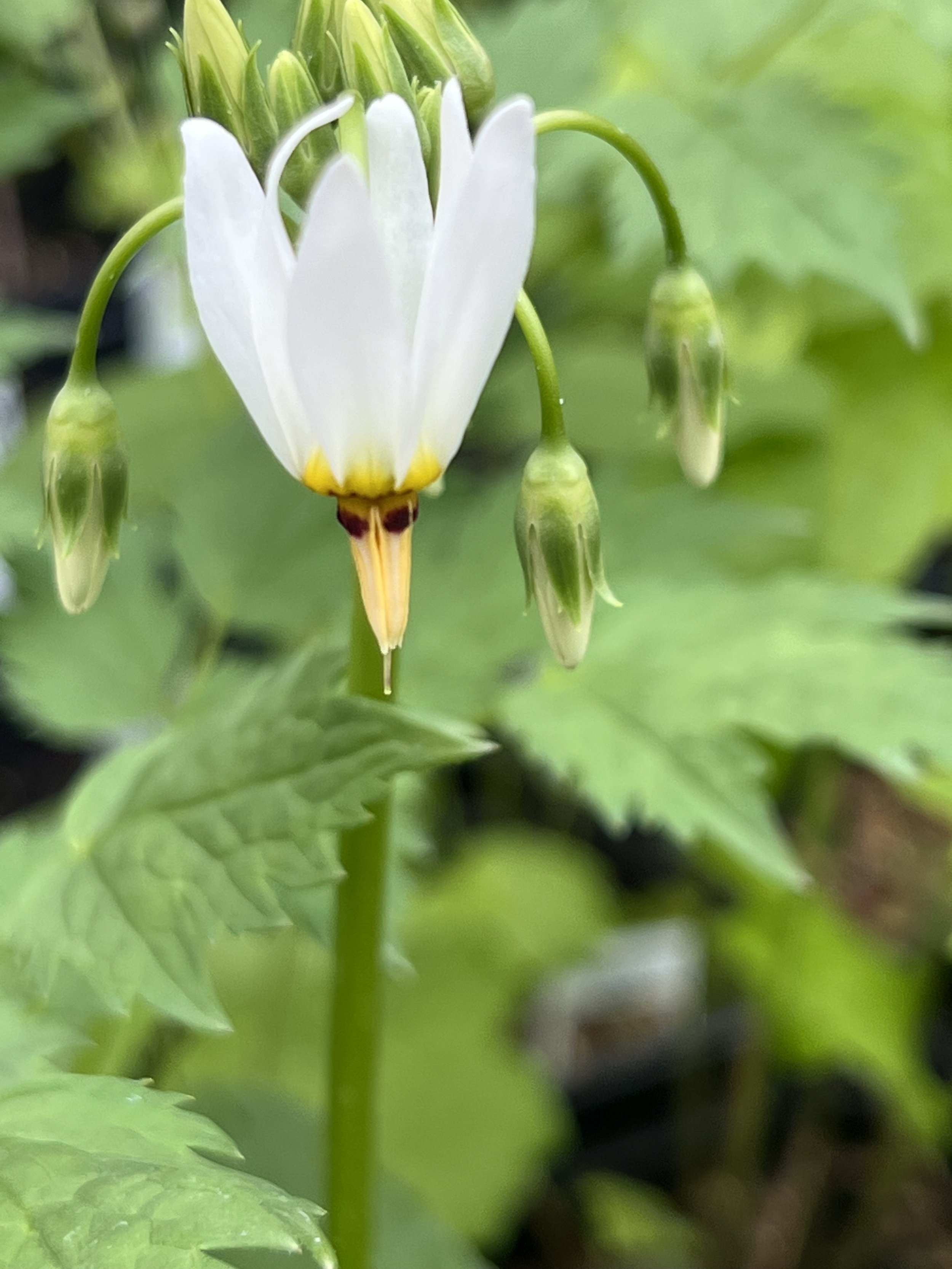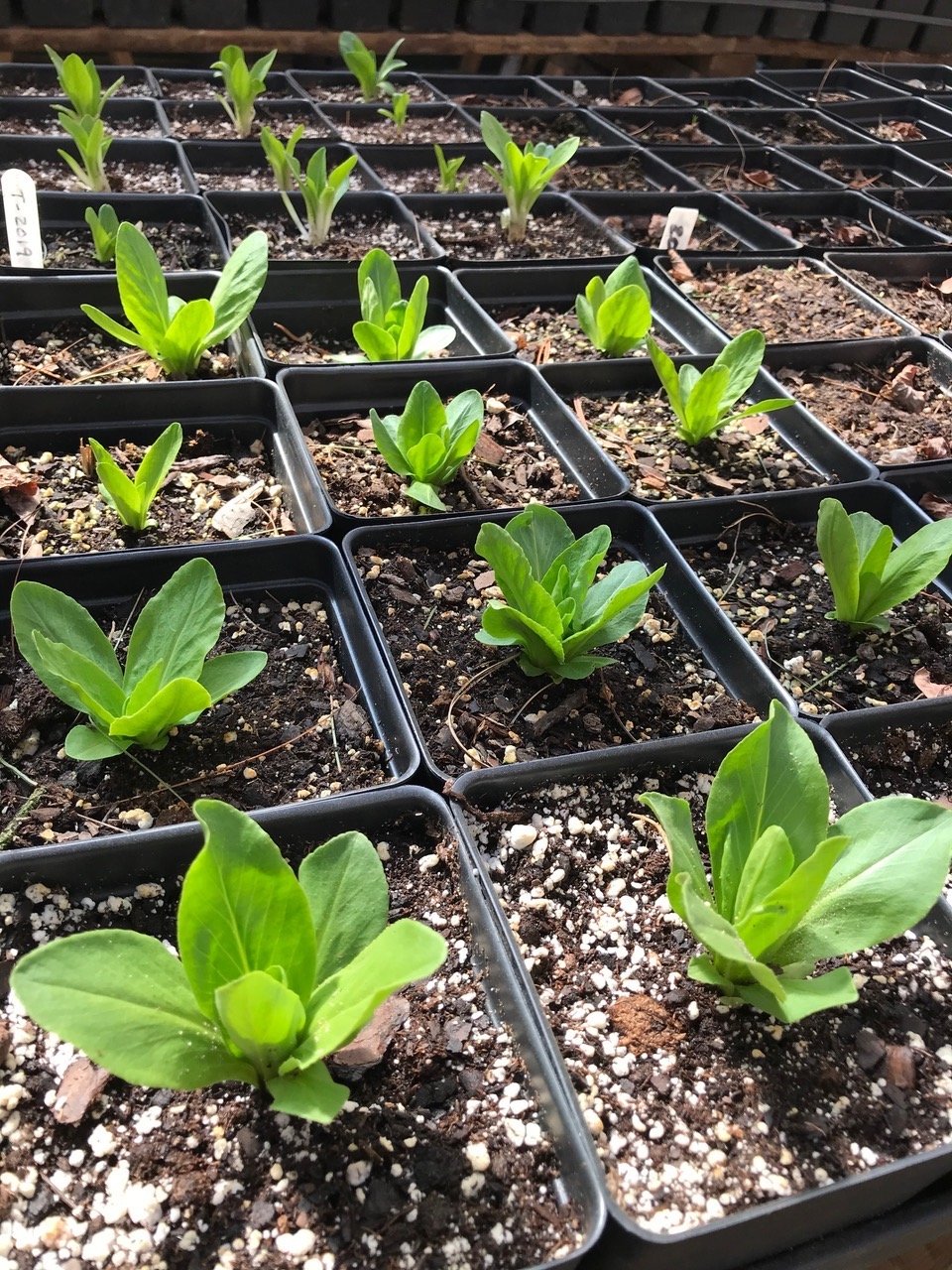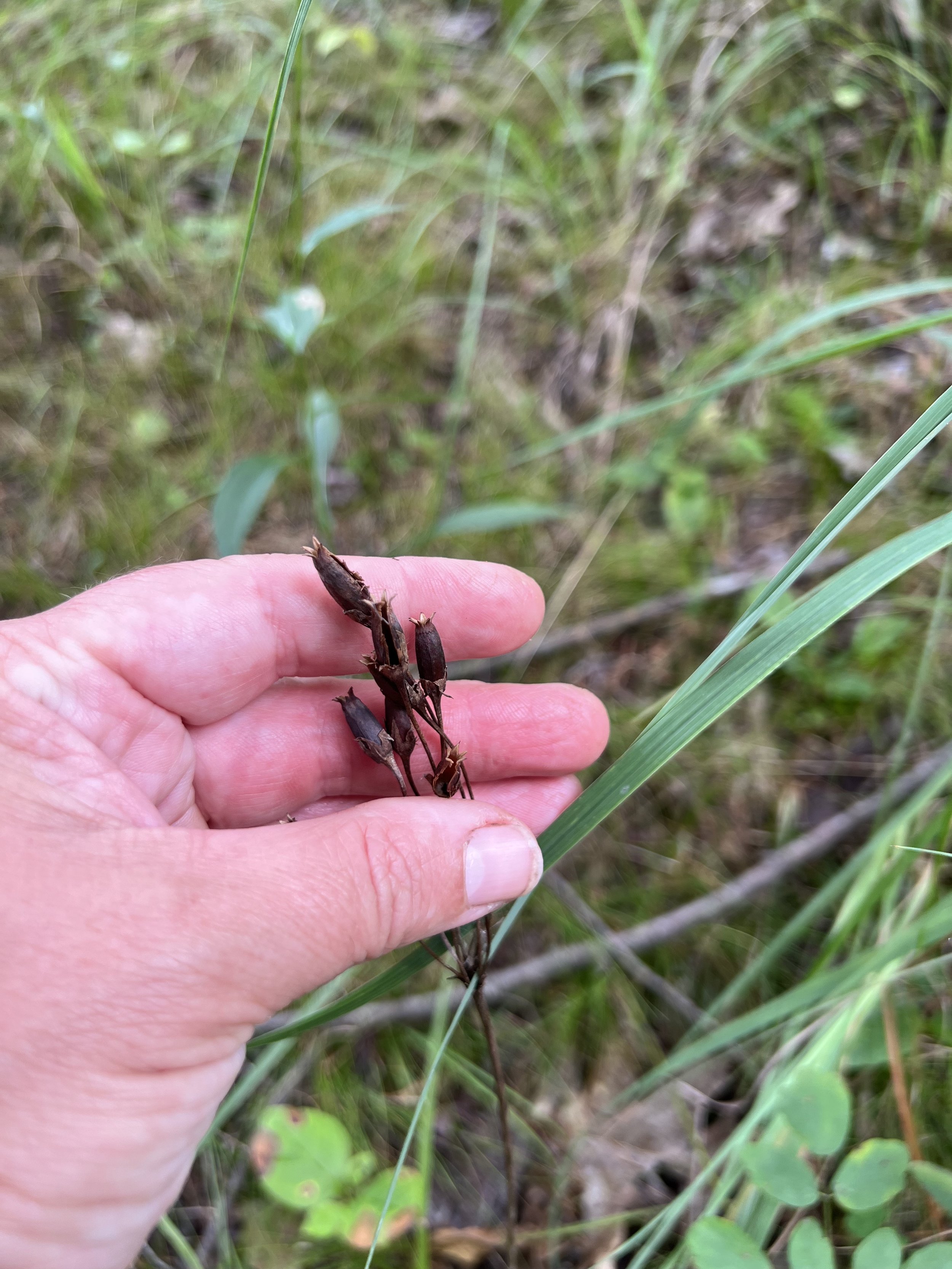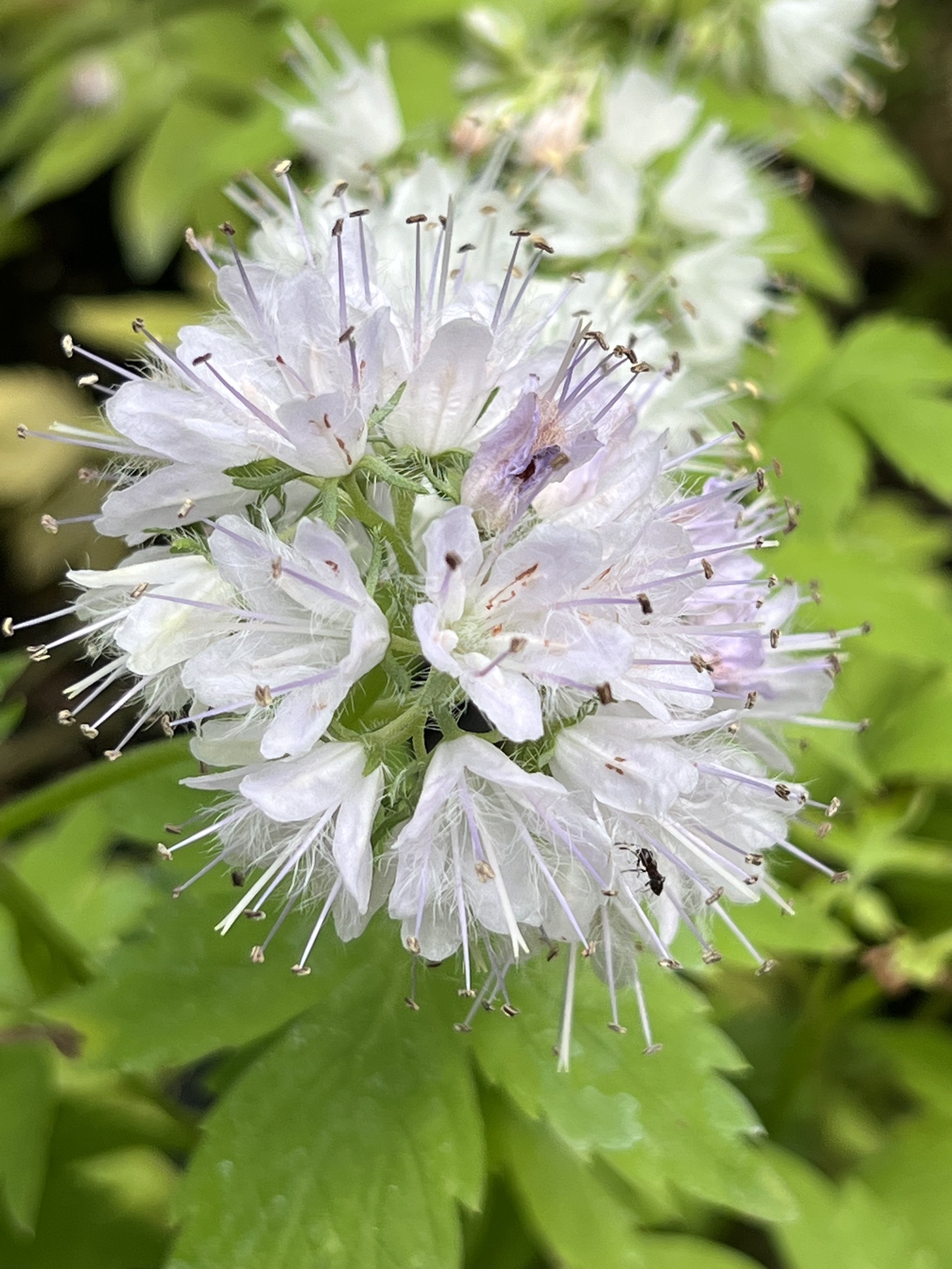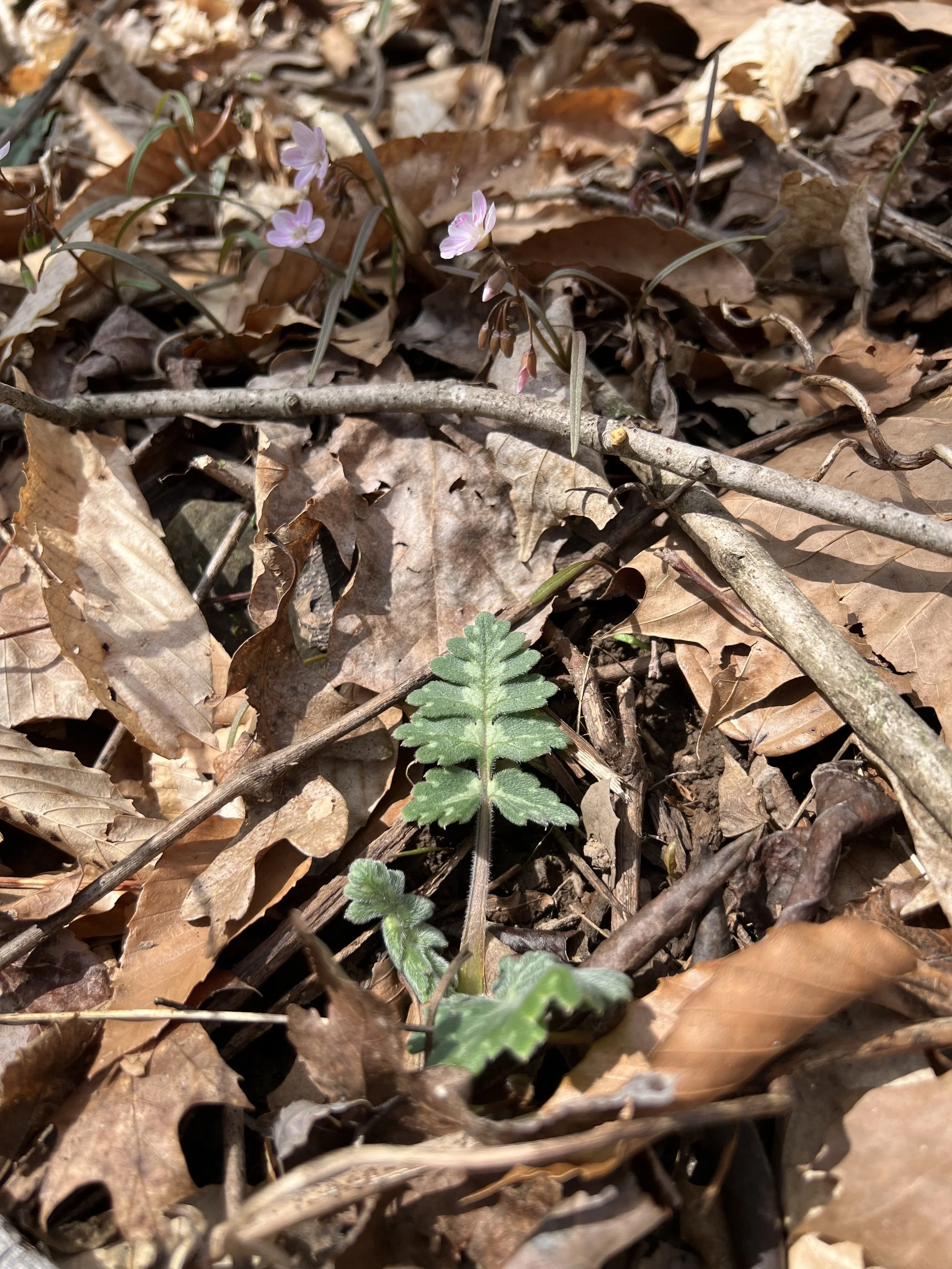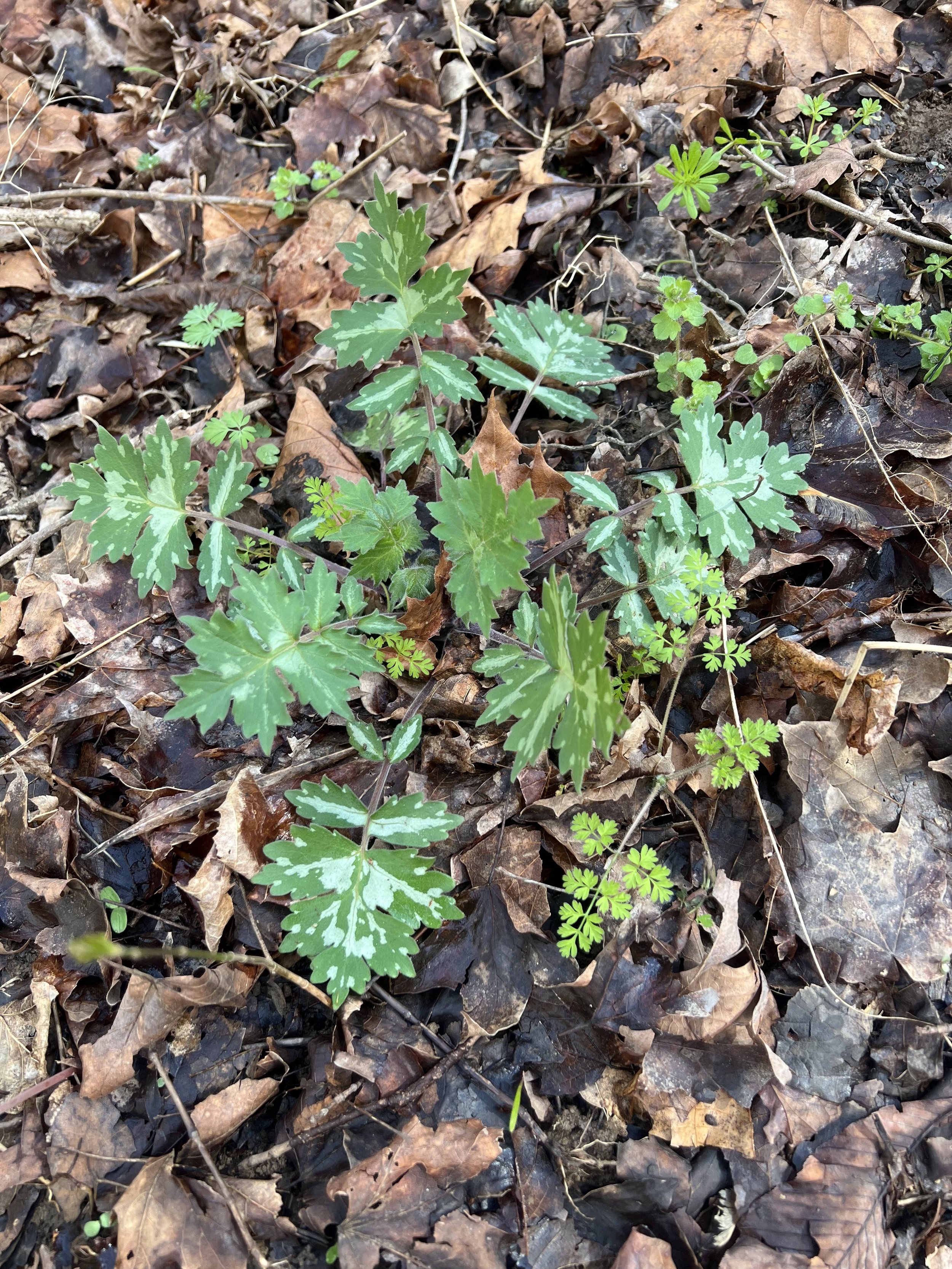 Image 1 of 7
Image 1 of 7

 Image 2 of 7
Image 2 of 7

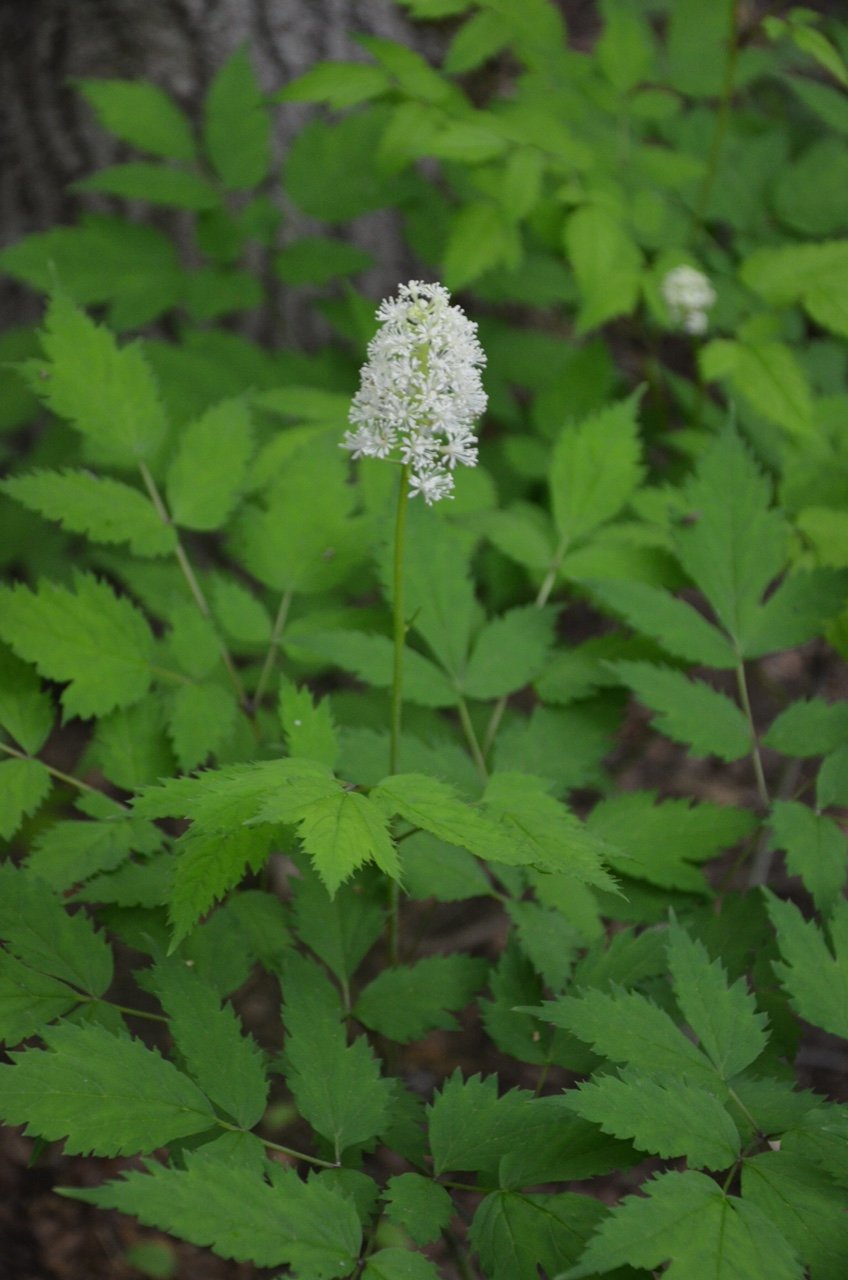 Image 3 of 7
Image 3 of 7

 Image 4 of 7
Image 4 of 7

 Image 5 of 7
Image 5 of 7

 Image 6 of 7
Image 6 of 7

 Image 7 of 7
Image 7 of 7








White Baneberry, Doll's Eyes (Actaea pachypoda)
The dark green, pointy leaves and white berries give White Baneberry a special appeal. Also known as Doll’s Eyes, they flower in the spring with a cluster of small white flowers on a peduncle (flower stem). After pollination, green berries begin to form. Over time, they turn white, while the stigma (Female part on a plant that receives pollen), turns black. This gives the berries their characteristic “doll’s eyes” look.
White Baneberry grows in dappled sunlight as well as full shade. It needs rich, organic soil that drains well. You can accomplish this with your soil by continually adding decomposing leaves.
The berries and leaves of this plant are toxic, so humans should definitely avoid eating them. Deer usually avoid them, but birds will eat the berries and disperse the seed.
Note: when my kids and I discovered these plants in a spring woods years ago, we named them fireworks plants due to the flower heads reminding us of the burst of a firework!
White Baneberry (Actaea pachypoda)
Michigan Flora reference page for state distribution: White Baneberry
height: 1-3 feet
bloom time: April-May
soil: medium, rich
sun: shade
plant spacing: 18”
flower: white (berry: white with black dot)
life cycle: perennial
family: Ranunculaceae
The dark green, pointy leaves and white berries give White Baneberry a special appeal. Also known as Doll’s Eyes, they flower in the spring with a cluster of small white flowers on a peduncle (flower stem). After pollination, green berries begin to form. Over time, they turn white, while the stigma (Female part on a plant that receives pollen), turns black. This gives the berries their characteristic “doll’s eyes” look.
White Baneberry grows in dappled sunlight as well as full shade. It needs rich, organic soil that drains well. You can accomplish this with your soil by continually adding decomposing leaves.
The berries and leaves of this plant are toxic, so humans should definitely avoid eating them. Deer usually avoid them, but birds will eat the berries and disperse the seed.
Note: when my kids and I discovered these plants in a spring woods years ago, we named them fireworks plants due to the flower heads reminding us of the burst of a firework!
White Baneberry (Actaea pachypoda)
Michigan Flora reference page for state distribution: White Baneberry
height: 1-3 feet
bloom time: April-May
soil: medium, rich
sun: shade
plant spacing: 18”
flower: white (berry: white with black dot)
life cycle: perennial
family: Ranunculaceae
The dark green, pointy leaves and white berries give White Baneberry a special appeal. Also known as Doll’s Eyes, they flower in the spring with a cluster of small white flowers on a peduncle (flower stem). After pollination, green berries begin to form. Over time, they turn white, while the stigma (Female part on a plant that receives pollen), turns black. This gives the berries their characteristic “doll’s eyes” look.
White Baneberry grows in dappled sunlight as well as full shade. It needs rich, organic soil that drains well. You can accomplish this with your soil by continually adding decomposing leaves.
The berries and leaves of this plant are toxic, so humans should definitely avoid eating them. Deer usually avoid them, but birds will eat the berries and disperse the seed.
Note: when my kids and I discovered these plants in a spring woods years ago, we named them fireworks plants due to the flower heads reminding us of the burst of a firework!
White Baneberry (Actaea pachypoda)
Michigan Flora reference page for state distribution: White Baneberry
height: 1-3 feet
bloom time: April-May
soil: medium, rich
sun: shade
plant spacing: 18”
flower: white (berry: white with black dot)
life cycle: perennial
family: Ranunculaceae

